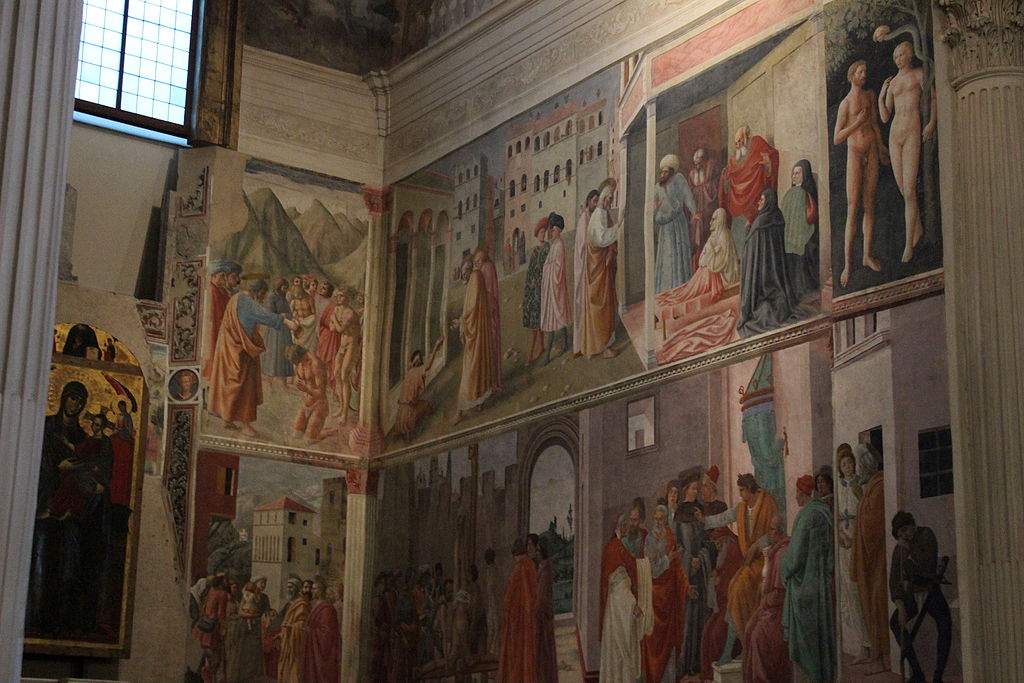Florence, Brancacci Chapel to be restored: frescoes are deteriorating
The Brancacci Chapel, home to the frescoes that constitute the masterpiece of the early Florentine Renaissance, will be restored: they are those by Masaccio and Masolino da Panicale, who were later joined by Filippino Lippi. The chapel, which is located inside the church of Santa Maria del Carmine in Florence, had already undergone monitoring last November, carried out by the city’s technical and fine arts services, in agreement with the Soprintendenza Archeologia, Belle Arti e Paesaggio and the CNR-ISPC of Florence. That inspection revealed that the chapel is affected by some deterioration phenomena of the pictorial cycle, which need to be stabilized through restoration work. For this reason, a memorandum of understanding was signed this morning between the municipality, the Superintendence and the Opificio delle pietre dure that defines the next steps. The last restoration dates back to the 1980s.
The protocol, with a duration of three years, provides for analysis and monitoring interventions by the Soprintendenza, with the involvement of the CNR, and the subsequent restoration by the Opificio delle Pietre Dure under the supervision of a scientific committee and thanks to a technical group that will be set up ad hoc. The Friends of Florence Foundation announced its intent to participate, together with the Jay Pritzker Foundation, in financing and carrying out the analysis and monitoring intervention, and also expressed interest in financing the restoration.
“We took advantage of the period of forced closure of the museums due to health regulations to carefully assess the state of maintenance of our artistic heritage,” said Culture Councilor Tommaso Sacchi. “Those checks showed the need to intervene to restore the precious pictorial cycle, and together with the Soprintendenza and Opificio we will take care of this important civic museum in the best possible way.”
The Chapel is owned by the Fondo Edifici di Culto del Ministero dell’Interno and is currently in concession to the City of Florence under the “Guerri” deed. The Chapel was founded by the Brancacci family in the late 14th century; the rich merchant Felice Brancacci is credited with commissioning in 1423 the frescoes with the stories of St. Peter. Masolino and Masaccio worked on them together, but due to the departure of the former to Hungary and the latter to Rome, the frescoes remained unfinished in 1427. Following the exile, in 1436, of Felice Brancacci, who had fallen into disgrace for his anti-Medicean sympathies, the friars of the convent had the portraits of all the people connected with his family erased, and in 1460 they named the chapel after the Madonna del Popolo, inserting the venerated thirteenth-century panel. Only in the years 1481-1483 did Filippino Lippi complete the missing scenes. Having escaped the fire that devastated the interior of the church in 1771, the chapel was purchased in 1780 by the Riccardi, who renovated the altar and floor. The frescoes, neglected throughout the nineteenth century, were subjected to dusting in 1904; restoration work carried out in the 1980s finally made it possible to recover the precious decorated surfaces.
Pictured: the Brancacci Chapel. Ph. Miguel Hermoso Cuesta
 |
| Florence, Brancacci Chapel to be restored: frescoes are deteriorating |
Warning: the translation into English of the original Italian article was created using automatic tools. We undertake to review all articles, but we do not guarantee the total absence of inaccuracies in the translation due to the program. You can find the original by clicking on the ITA button. If you find any mistake,please contact us.





























